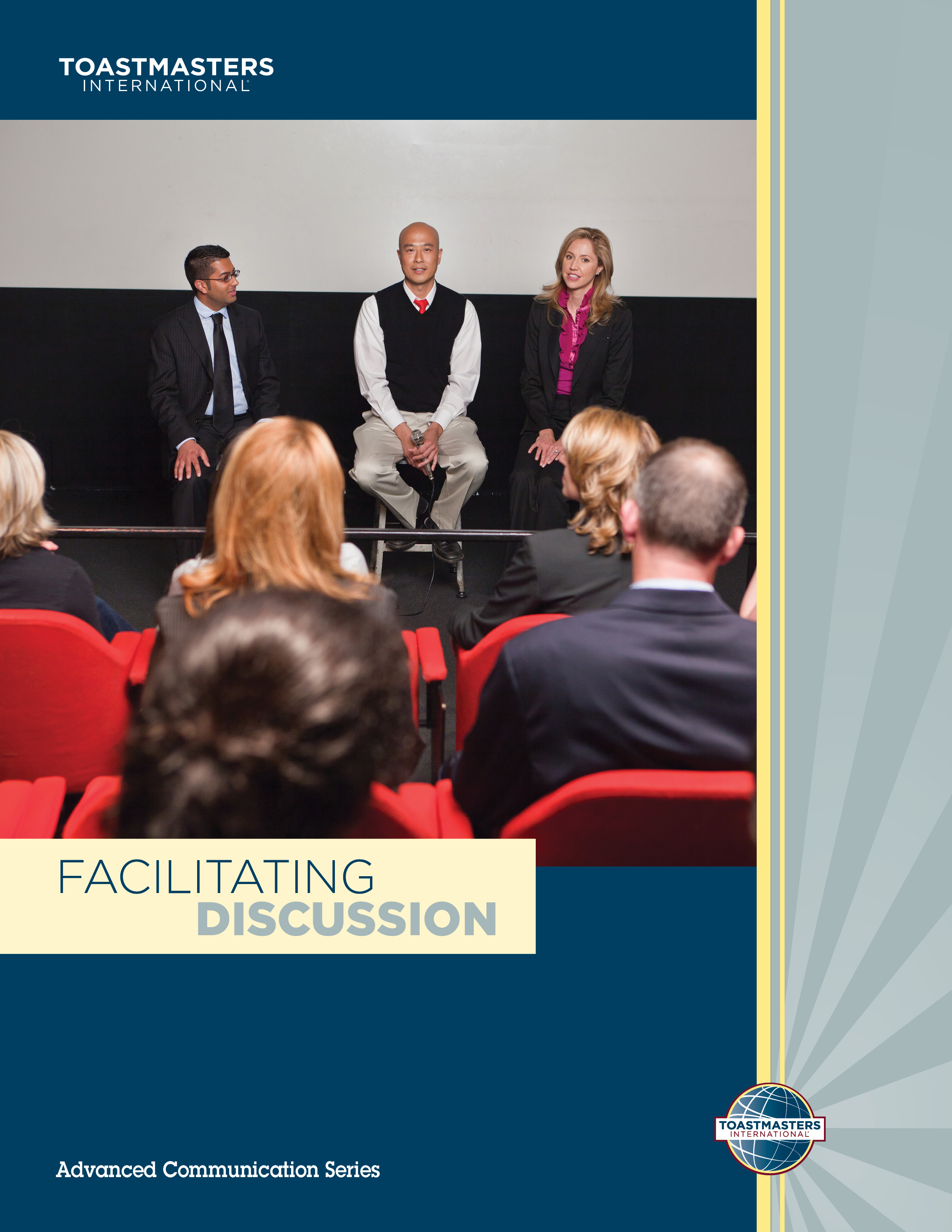Project #1: The Panel Moderator
Executive Summary:
A panel discussion is an excellent method for presenting different perspectives of an issue, event, or decision. Much like the Toastmaster at a club meeting, the panel moderator facilitates the discussion, introduce the panelists, moderates the question-and-answer session after the presentations, and keeps the discussion focused and on track.
Objectives:
- Select a topic for a panel discussion.
- Identify differing viewpoints to be addressed by panelists
- Organize and moderate a panel discussion.
- Recommended TIME: 28 - 30 minutes. Optional TIME: 22 - 26 minutes.
The purpose of this project was for the moderator to select a topic for a panel discussion, select panelists, and moderate the discussion. Each panelist covers a different aspect or viewpoint of the subject so no material overlaps. After all panelists have spoken the moderate facilitates a question-and-answer session. In addition to your verbal evaluation, please write answers to the questions below.
Project #2: The Brainstorming Session
Executive Summary:
Brainstorming is a useful tool for solving problems. The group is asked to quickly generate a list of possible solutions or ideas without considering merit or practicality. The facilitator oversees the process and strives to generate maximum involvement and participation. from the group. Once a list is generated, the facilitator may ask the group to discuss the ideas and reduce it until the best few remain.
Objectives:
- Select a problem for a brainstorming session for which you serve as facilitator.
- Conduct a brainstorming session.
- Have participants reduce the list of ideas to the three best.
- Recommended TIME: 31 - 33 minutes. Optional TIME: 20 - 22 minutes.
For this project, the speaker serves as a facilitator for a brainstorming session. The session's purpose is to find one or more solutions to a problem. The facilitator serves in a neutral capacity, encouraging participation and keeping the group focused. Once a list is generated, the facilitator helps the group identify the three best or most practical ideas. In addition to your verbal evaluation, please write answers to the questions below.
Project #3: The Problem-Solving Discussion
Executive Summary:
Bringing people together to discuss and resolve a problem is common. The facilitator leads the discussion, keeping it orderly and focused so the group can discuss the issues and reach a decision quickly and efficiently. Three ways to reach a final decision are majority vote, multivoting, and nominal group technique.
Objectives:
- Discuss the three ideas generated in Project 2.
- Determine which one best resolves the problem.
- Recommended TIME: 26 - 31 minutes. Optional TIME: 19 - 23 minutes.
This assignment requires the speaker to serve as a facilitator, leading the group in discussing possible solutions to a problem and selecting the best one by using one of three voting methods. The facilitator ensures each participant has the opportunity to contribute. The facilitator is neutral, functioning only to draw out and focus the group's thoughts. The facilitator should bring the group to a decision. In addition to your verbal evaluation, please write answers to the questions below.
Project #4: Handling Challenging Situations
Executive Summary:
Often some people involved in discussions display behaviors that disrupt the group's efforts. One of the facilitator's responsibilities is to minimize these disruptions by using recommended techniques. He or she should avoid embarrassing anyone or being overbearing.
Objectives:
- Select a problem and ask club members to discuss and resolve it by either a majority vote or by compromise
- Serve as facilitator for the discussion
- Effectively handle any member's behavioral problems that may interfere with the discussion.
- Recommended TIME: 22 - 32 minutes. Optional TIME: 12 - 21 minutes.
This project involves a role-play, in which some members of the discussion group assume the roles of people who disrupt the discussion for which the speaker is serving as facilitator. The speaker is to select a problem that can be solved in the allotted time and ask club members to discuss and resolve it. Then use one of the two voting methods the speaker did not use in Project 3 to make a final decision. Should any group members disrupt the discussion or seem unwilling to participate, the speaker is to use some of the suggested methods to keep the discussion focused. In addition to your verbal evaluation, please write your answers to the questions below.
Project #5: Reaching a Consensus
Executive Summary:
Many consider consensus decision-making the best of all decision-making options because the results are often acceptable to every participant, although they may not be everyone's preference. The process to reach a consensus requires more time than other options and requires a facilitator who is good at listening, probing, clarifying, and managing disagreements.
Objectives:
- To select a problem for the group to discuss and resolve.
- As facilitator, help the group reach a consensus
- Recommended TIME: 31 - 37 minutes. Optional TIME: 20 - 26 minutes.
This assignment requires the speaker to serve as a facilitator, selecting a problem for the club to discuss and resolve by consensus. The facilitator ensures each participant has the opportunity to contribute and that the final decision is agreed upon the group. The facilitator is neutral, functioning only to draw out and focus the group's thoughts. The facilitator should bring the group to consensus within the allotted time. In addition to your verbal evaluation, please write answers to the questions below.
For more information:
Item 226D

No comments:
Post a Comment